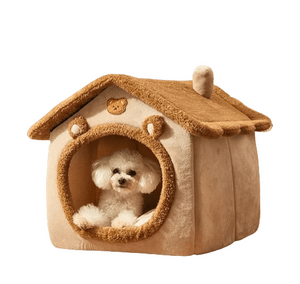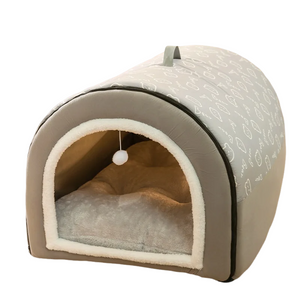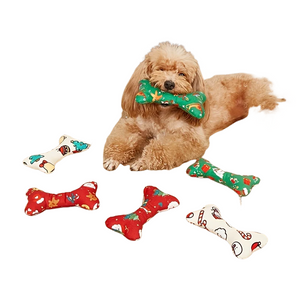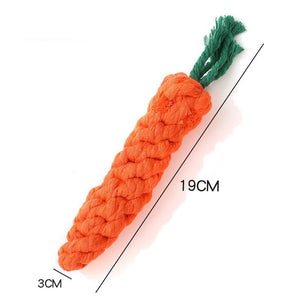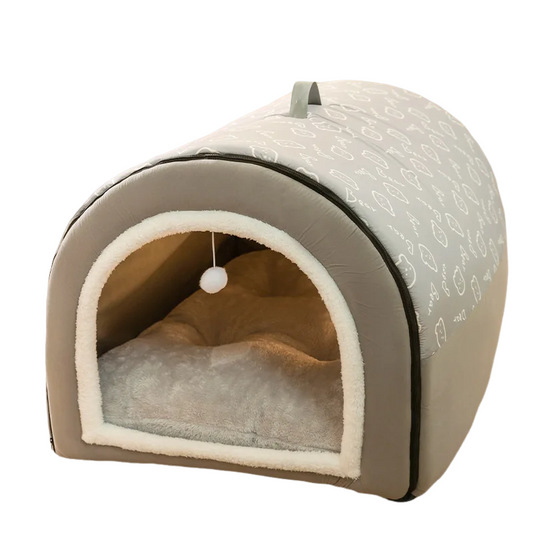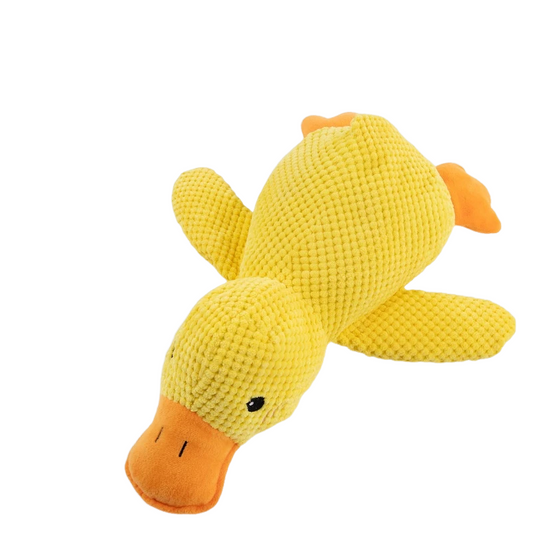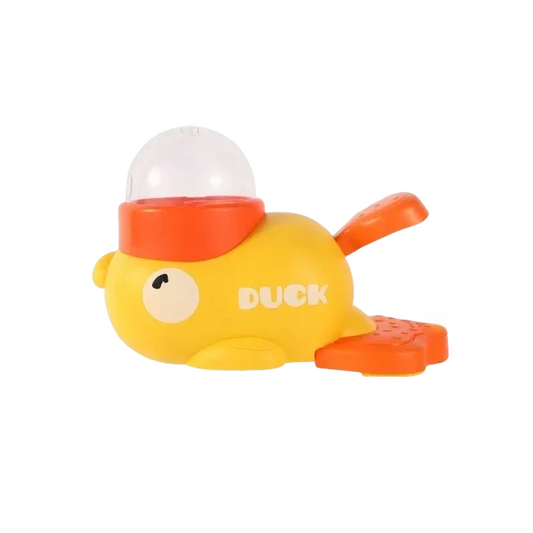
Managing Anxiety in Dogs: A Comprehensive Guide to Causes, Symptoms, and Practical Solutions
Share
Introduction
Dog anxiety is a common behavioral and health concern that affects millions of pets worldwide. From occasional stress to chronic anxiety, this condition can significantly impact your dog’s emotional well-being and overall quality of life. Whether it's separation anxiety in dogs, fear of loud noises like thunderstorms, or distress in unfamiliar environments, knowing how to identify and manage these triggers is key to raising a happy and healthy dog.
As a responsible pet owner, learning to recognize the signs of dog anxiety—such as pacing, excessive barking, destructive behavior, or withdrawal—is the first step. Understanding what causes your dog’s anxiety and exploring natural calming solutions for dogs, training techniques, and lifestyle adjustments can make a big difference.
In this comprehensive guide, we’ll cover:
-
The most common causes of dog anxiety
-
Key behavioral and physical symptoms to watch for
-
Practical tips for calming anxious dogs naturally
-
Long-term strategies for anxiety management and emotional support
Whether your pup gets anxious when you leave the house or becomes overwhelmed by loud environments, our expert-backed guide will help you support your dog through every stage of stress and recovery—ensuring a calm, safe, and confident life for your four-legged companion.
1. Common Causes of Anxiety in Dogs
Understanding the common causes of anxiety in dogs is the first step toward helping your pet live a calmer and more balanced life. Anxiety can be triggered by various factors, including a dog’s breed, background, personality traits, and environment. By identifying what’s causing the stress, you can implement more effective, tailored anxiety relief strategies.
1.1 Separation Anxiety
Separation anxiety in dogs is one of the most frequently observed anxiety disorders, especially in affectionate breeds that build strong emotional attachments with their owners. Dogs with separation anxiety often panic when left alone, which can lead to destructive behaviors, such as excessive barking, howling, chewing furniture, or scratching doors.
Dogs from shelters or those who have experienced past trauma or abandonment are particularly prone to this type of anxiety. If left unaddressed, separation anxiety can worsen over time, leading to chronic stress. Early intervention is crucial. Start by gradually increasing alone time and reinforcing calm behavior with positive rewards.
1.2 Noise Phobias
Noise phobia in dogs is another common anxiety trigger, often caused by loud or sudden sounds like fireworks, thunderstorms, or even everyday appliances like vacuum cleaners. Symptoms can include trembling, hiding, panting, pacing, or attempts to escape from the sound source.
To manage this type of anxiety, consider noise desensitization techniques, using calming music, creating a safe, soundproof space, or using anxiety wraps that apply gentle, comforting pressure to the dog’s body. These techniques can help reduce sensitivity and increase your dog’s sense of security.
1.3 Changes in Environment or Routine
Dogs are highly sensitive to routine and environmental changes. Moving to a new home, changes in family members, traveling, or even altering feeding and walk schedules can trigger anxiety. Dogs reacting to change might show signs like loss of appetite, increased clinginess, or unexpected indoor accidents.
To reduce stress from environmental changes, keep routines as consistent as possible. Stick to the same feeding, walking, and playtime schedules, and introduce new environments slowly. Allow your dog time to adjust and explore new settings at their own pace to ease the transition.
1.4 Social Anxiety
Social anxiety in dogs is often seen in pets that weren’t adequately socialized during their early development. This condition can manifest as fear or avoidance of other animals, strangers, or unfamiliar places, and may even escalate into defensive or aggressive behavior.
To treat social anxiety, gradual exposure is key. Introduce your dog to new people, animals, and settings in a calm, controlled way. Training classes and structured socialization activities, paired with positive reinforcement, can help build confidence and reduce fear-based responses over time.
2. Recognizing the Signs of Anxiety in Dogs
Understanding how to recognize signs of anxiety in dogs is crucial for early intervention and long-term emotional health. Dogs express anxiety in both behavioral and physical ways, and identifying these symptoms promptly can prevent the condition from worsening. Knowing what to watch for helps pet owners take timely action and provide comfort.
2.1 Behavioral Signs
Excessive Barking or Howling
One of the most noticeable behavioral signs of dog anxiety is constant barking or howling, especially when the dog is left alone. This often indicates separation anxiety in dogs, and the vocalization typically starts shortly after the owner departs, sometimes continuing for hours.
Destructive Behavior
Chewing on furniture, doors, shoes, or other household items is a classic anxiety indicator. Anxious dogs may also dig aggressively or scratch at doors and windows in an attempt to escape their environment. This destructive behavior often stems from panic and stress.
Restlessness or Pacing
If your dog cannot settle and frequently paces back and forth, especially around doorways or rooms, it may be attempting to self-soothe. This repetitive, restless movement is a common reaction to underlying stress or uncertainty.
Clinginess
“Velcro dogs” that follow you constantly and become agitated when left alone may be showing signs of attachment anxiety. These dogs rely heavily on your presence for emotional stability, and separation can lead to intense distress and panic.
2.2 Physical Signs
Panting and Shaking
When dogs experience anxiety, they may pant excessively or tremble—even in the absence of physical exertion or heat. Shaking in dogs without an obvious reason is often a sign of emotional distress.
Drooling or Excessive Licking
Some dogs react to stress by drooling more than usual, while others engage in compulsive licking behaviors, particularly licking their paws or body as a form of self-soothing. This can lead to raw spots or skin irritation if left unaddressed.
Dilated Pupils and Flattened Ears
During anxiety episodes, a dog’s body language becomes more telling. Look for wide pupils, flattened ears, and a tense posture. Dogs may also crouch, lower their tail, or try to hide in confined spaces to avoid perceived threats.
Inappropriate Elimination
A clear physical sign of intense anxiety is urinating or defecating indoors, even if your dog is fully house-trained. This behavior is typically triggered by acute stress or situations involving loud noises, strangers, or separation.
3. Practical Solutions for Managing Anxiety in Dogs
Dealing with an anxious dog can be challenging, but with patience and the right approach, their stress can be significantly reduced. Here are some practical solutions to help manage your dog’s anxiety.
3.1 Create a Safe, Comfortable Space
Designating a specific area in your home where your dog can retreat during stressful situations is one of the most effective ways to manage anxiety. This space should be quiet, calm, and free from distractions. Crates can serve as "dens" for dogs, as long as they are introduced gradually and used positively. Adding soft bedding and familiar toys to this space can help your dog feel more secure.
3.2 Increase Exercise and Mental Stimulation
Exercise is essential for dogs, not only to burn off physical energy but also to relieve stress. Daily walks, runs, or play sessions can help reduce anxiety by stimulating the production of endorphins, the body’s natural stress relievers. In addition to physical exercise, providing your dog with mental stimulation through puzzle toys, obedience training, or interactive play helps keep their mind engaged and focused on positive activities.
3.3 Utilize Calming Aids
There are various products available that can help soothe anxious dogs. Pheromone diffusers, sprays, and collars can mimic the calming pheromones dogs naturally produce, helping to create a more relaxed environment. Additionally, calming supplements containing ingredients like chamomile, valerian root, and L-theanine can help alleviate mild to moderate anxiety. Always consult your veterinarian before introducing new supplements.
3.4 Desensitization and Counterconditioning
Desensitization is a long-term solution to anxiety that involves gradually exposing your dog to their anxiety trigger in controlled, positive environments. For example, if your dog is afraid of thunderstorms, you can play recordings of thunder at a low volume and reward your dog with treats and praise when they remain calm. Over time, you can increase the volume as your dog becomes more accustomed to the noise.
Counterconditioning focuses on changing your dog’s emotional response to anxiety triggers by pairing the trigger with something they enjoy, like their favorite treats or toys. This technique works well for dogs with noise phobias or social anxiety.
4. Long-Term Strategies for Anxiety Management and Emotional Support
Managing dog anxiety effectively requires more than just short-term fixes—it demands consistent, long-term strategies that focus on both emotional support and behavioral improvement. If your pet suffers from separation anxiety, noise phobia, or generalized fear, the right combination of training, environment, and lifestyle changes can significantly improve their quality of life.
4.1 Establish a Consistent Routine
Dogs thrive on routine. A predictable daily schedule for meals, walks, playtime, and rest helps reduce anxiety by giving your dog a sense of stability and control. Avoid abrupt changes whenever possible.
4.2 Use Positive Reinforcement Training
Behavioral training based on positive reinforcement helps anxious dogs build confidence. Reward calm behaviors and gently redirect anxious reactions. Over time, consistent training can reshape how your dog responds to stressors.
4.3 Create a Safe, Calming Environment
Designate a quiet, comfortable space in your home where your dog can retreat during stressful moments. Consider using calming dog beds, white noise machines, or anxiety-reducing diffusers to make the environment soothing.
4.4 Engage in Regular Physical and Mental Exercise
Boredom and excess energy can heighten anxiety. Daily walks, puzzle toys, scent games, and interactive play sessions are excellent ways to keep your dog mentally and physically stimulated, which in turn lowers anxiety levels.
4.5 Provide Emotional Support and Bonding Time
Emotional reassurance plays a critical role in your dog’s long-term well-being. Spend quality time with your dog through gentle petting, brushing, or simply being present. Dogs are highly sensitive to their owner’s emotions—your calm energy can help them feel secure.
4.6 Consider Natural Calming Supplements or Veterinary Help
If anxiety persists, talk to your vet about natural calming treats, CBD oils, or prescription anxiety medication for dogs. These options can complement training and environmental strategies, especially for severe anxiety cases.
5. Seeking Professional Help for Severe Anxiety
In some cases, your dog’s anxiety may be too severe to manage with at-home strategies alone. If your dog exhibits signs of extreme distress, such as uncontrollable shaking, continuous destructive behavior, or aggressive tendencies, professional help may be necessary. A veterinarian or certified behaviorist can assess your dog’s anxiety and recommend advanced treatments, including behavior modification therapy or prescription medications.
Common medications used to treat anxiety in dogs include selective serotonin reuptake inhibitors (SSRIs) like fluoxetine or tricyclic antidepressants like clomipramine. These medications are typically used for long-term management of anxiety disorders and can be highly effective when combined with behavior therapy. In some cases, sedatives may be prescribed for specific anxiety-inducing events, such as vet visits or thunderstorms.
Conclusion
Managing anxiety in dogs requires patience, consistency, and understanding. By identifying the causes of your dog’s anxiety, recognizing the symptoms, and implementing practical solutions like creating a safe space, increasing exercise, and using calming aids, you can significantly improve your dog’s quality of life. For more severe cases, seeking professional help can provide you with additional tools to ensure your dog feels secure and stress-free.
At The Pet Paradise, we offer a range of products designed to support anxious dogs, including cozy beds, interactive toys, and calming aids. With the right combination of care, training, and products, you can help your dog live a happy, anxiety-free life.






